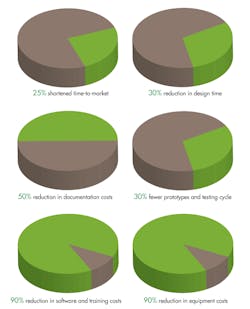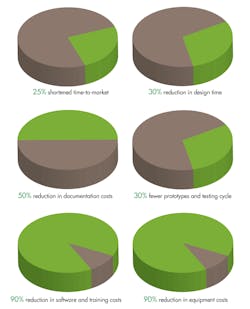What’s the Difference Between Consultants and In-House Engineering? (.PDF Download)
In today’s competitive business environment, it is more important than ever to bring high-quality, innovative products to market quickly and cost-effectively. For many organizations across a wide range of industries, the key to meeting this goal is a finely tuned product-development process that includes powerful engineering simulation technology.
Simulation software is instrumental in reducing the time and costs associated with physical prototype testing of products for aerospace, automotive, biomedical, chemical equipment, oil and gas, power generation, construction, and manufacturing industries. As companies embrace simulation technology, they should consider the extent of their internal resources and which functions need to be outsourced to a professional engineering consultant to provide the best ROI.
The return-of-investment benefits for using engineering simulation services include a shorter time-to-market, reduced design time, less prototype iterations, testing, and reduced cost in software, training, and equipment.
Product simulation enables designers to perform structural, thermal, fatigue, and fluid analyses to get deeper insight into performance and evaluate countless design iterations. The capabilities to compare alternatives, perform “what-if” studies with various parameters, and correct problems early in development all contribute to a better, higher-performing product while reducing costs and time-to-market.
In particular, engineers are making use of three important techniques critical to product development. Finite element analysis (FEA) is used to determine a variety of design attributes, including structural stress, deflections, fatigue life, vibration, thermal distribution, and electromagnetic fields. Likewise, computational fluid dynamics (CFD) is used in studying flow, turbulence, pressure distributions, and other aspects of the interaction of liquids and gases with structures. Finally, electromagnetics (EMAG) studies low- and high-frequency product designs, such as actuators and antennas.

